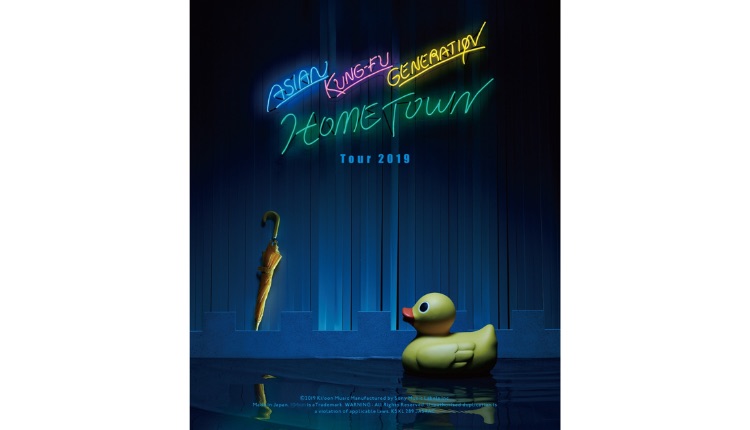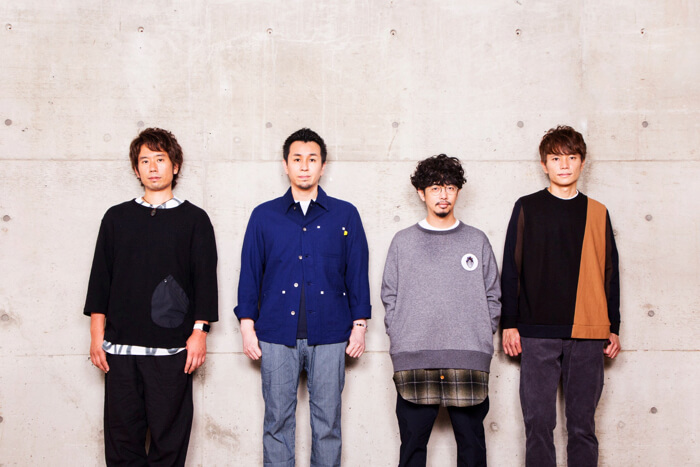ASIAN KUNG-FU GENERATION’s highly-anticipated new album Home Town finally hit shelves today. In line with the release, the band have released a trailer on YouTube for the DVD included on the first press limited edition copies of the album entitled “ASIAN KUNG-FU GENERATION America Tour Documentary Pt.2 (Latin America).” It compiles footage of AKFG during the South American leg of their American tour last year.
Related Article: MMN Interview (Part 1): ASIAN KUNG-FU GENERATION discuss how writing ‘Home Town’ was different from their previous records
‘Home Town’ First Press Limited Edition DVD Trailer
Additionally, AKFG have released the first episode of Ajikan LOCKS! Bootleg over on their album’s website. Ajikan LOCKS! is a ‘lecture on rock’ hosted by the band over on the radio programme “SCHOOL OF LOCK!” that they first started in 2005. It was a regular feature that closed temporarily in 2014 and is now being revived.
The segment features witty dialogue between the four members, and for the first episode they are joined by Principal Toyama and Vice Principal Ashizawa from the main SCHOOL OF LOCK! show which airs on TOKYO FM and JFN 38 Stations. Six episodes are scheduled which begin today on the release date of their album.
Information
Home Town
Release Date: December 5, 2018
First Press Limited Edition (2 CDs+DVD): ¥4,600 (+Tax) *PlayPASS compatible
Regular Edition (CD-Only): ¥2,913 (+Tax) *First press edition is PlayPASS compatible
*Limited Edition DVD features “ASIAN KUNG-FU GENERATION America Tour Documentary Pt.2 (Latin America)”
ASIAN KUNG-FU GENERATION Official Website: www.asiankung-fu.com
RELATED ENTRIES
-
ASIAN KUNG-FU GENERATION Announce Annual ‘SUI CUP’ Tour & Release Live YouTube Video
25.January.2020 | MUSIC
ASIAN KUNG-FU GENERATION has announced that its annual “SUI CUP” live tour, which has been held every year since 2015, will be held for the fifth time this year. The title of the tour is “SUI CUP 2 ~The Song of Apple~” and it will begin in Sapporo on May 21 and finish in Hiroshima on June 12 for a total of seven shows, with supporting bands at each of them.
Masafumi Gotoh, the lead singer, songwriter, and guitarist of ASIAN KUNG-FU GENERATION, released a statement about the support acts.
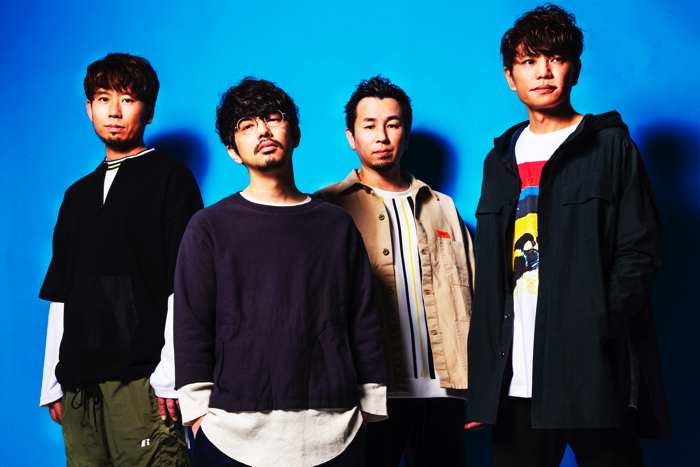
———————————–
Masafumi Gotoh Comment
“Kiyomaru Togo and YeYe both have their own individual and unique directions. NOT WONK are hope for the indie rock genre, as are Shinsei Jusrassic Boys. Ohzora Kimishima sounds nostalgic and has burning talent. totsuzensyonen have a clumsy but honest passion. the chef cooks me give love and blessing to their the tumultuous music. I’m excited to have all of them on board, and I’m excited for the near future where I get to rewrite cliched words such as the ones I’ve used here. I’m confident this is going to be an amazing tour. To everyone in Japan: hop on board!”
———————————–
Pre-sale tickets are now live on ASIAN KUNG-FU GENERATION’s official website. Further information will be posted there in the near future.
ASIAN KUNG-FU GENERATION – “Kaihouku”【LIVE】Tour 2019 “Hometown”
The band also posted a live video of their newest song Kaihouku taken from the concert at Pacifico Yokohama during their “Hometown” tour.
Kaihouku was released as a double A-side single along with the song Dororoーthe opening theme for the anime series of the same nameーlast year on May 15.
Information
ASIAN KUNG-FU GENERATION Tour 2020 SUI CUP 2 ~The Song of Apple~
2020/5/21 @ Zepp Sapporo (Support Act: NOT WONK)
2020/5/25 @ KT Zepp Yokohama (Support Act: Kiyomaru Togo)
2020/5/27 @ Zepp Nagoya (Support Act: Jurassic Boys)
2020/5/28 @ Zepp Osaka Bayside (Support Act: YeYe)
2020/6/9 @ Zepp Tokyo (Support Act: the chef cooks me)
2020/6/11 @ Zepp Fukuoka (Support Act: totsuzensyonen)
2020/6/12 @ Hiroshima CLUB QUATTRO (Support Act: ohzora kimishima)
*All shows have standing and reserved seating except Hiroshima CLUB QUATTRO which is all standing
Times: OPEN 18:00/START 18:45
Price: Standing ¥5,800 / Seating ¥6,300 (Tax Included)
*Standing tickets are numbered and so attendees must enter in order
*Separate mandatory drink fee charged upon entry
*Everyone aged 3+ years must hold their own valid ticket
*Student discount is available for high schoolers and below, they need simply show their student ID
*Elementary to high school students can get ¥1,500 cashback at the venues
*Elementary school students must show something that proves their age; junior high and high schoolers must take their student IDs
Pre-sale Tickets
Running: January 24, 2020 at 15:00 (JST) to February 2, 2020 at 23:59 (JST)
Purchase: Via the band’s official website
Standard Tickets
On Sale: April 19, 2020 at 10:00AM (JST)
ASIAN KUNG-FU GENERATION Official Website: www.asiankung-fu.com/
SUI CUP 2 Tour 2020 Official Website: www.akglive.com/tour2020/
-
ASIAN KUNG-FU GENERATION Drops Teaser Video for ‘Hometown’ Tour 2019 Blu-Ray and DVD
04.December.2019 | MUSIC
Following their Shu 15 Kan – Tour 2019 Hometown tour that took place earlier this year, ASIAN KUNG-FU GENERATION released the official performance video on Blu-ray and DVD on December 4 and dropped a teaser on YouTube.
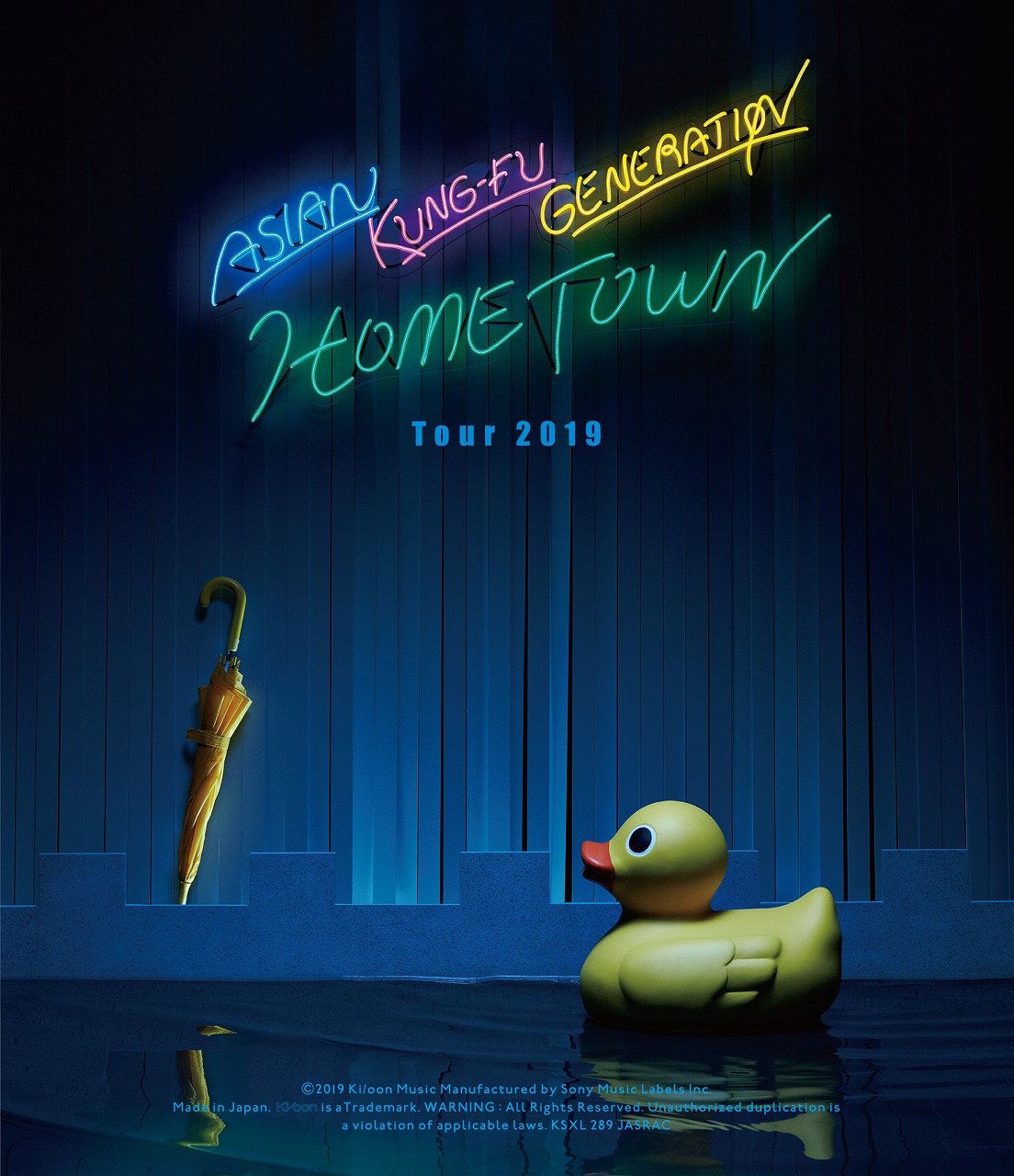
The Hometown tour took place from March to July 2019 to celebrate the release of ASIAN KUNG-FU GENERATION’s tenth studio album. The performance video was taken at Pacifico Yokohama and includes the set list from the Hometown album and even an acoustic set.
Check out the teaser video below:
ASIAN KUNG-FU GENERATION –Shu 15 Kan – Tour 2019 Hometown- (Trailer)
Some of the short snippets of songs revealed in the teaser include Kouya wo aruke, Kimi No Machi Made and the acoustic version of Oceanic Route. If you’re an ASIAN KUNG-FU GENERATION fan, you should definitely check it out.
Information
DVD and Blu-ray: –Shu 15 Kan – Tour 2019 Hometown-
Release: December 4, 2019
DVD (KSBL-6337): ¥5,300 + Tax
Blu-ray (KSXL-289): ¥6,000 + Tax
ASIAN KUNG-FU GENERATION Official Website: www.asiankung-fu.com
-
ASIAN KUNG-FU GENERATION Sing With 200 Fans in ‘Kaihouku’ Music Video
16.May.2019 | MUSIC
ASIAN KUNG-FU GENERATION just released the music video for their new song Kaihouku on YouTube.
“Kaihouku” Music Video
Kaihouku is one of two tracks on AKFG’s new double A-side single Dororo / Kaihouku which was released today (May 15). The song has been performed during the encore at every one of the band’s shows on their ongoing “Hometown” tour.
The music video includes 200 extras all of whom are fans of AKFG and help them sing the song. People were asked to sign up to be part of the music video.
The music video for Dororo was also released last month so be sure to check that out too. The song is the opening theme for the ongoing anime series Dororo.
Information
Dororo / Kaihouku
Release Date: May 15, 2019
First Press Limited Edition (CD+Blu-ray): ¥3,241 (Before Tax) [KSCL-3146~3147]
Regular Edition (CD-Only): ¥1,000 (Before Tax) [KSCL-3148]
Tour Information: http://www.akglive.com/tour2019/
Official Website: www.asiankung-fu.com
-
ASIAN KUNG-FU GENERATION Digitally Release TV Anime ‘Dororo’ Opening Theme
22.April.2019 | ANIME&GAME / MUSIC
ASIAN KUNG-FU GENERATION released their new song Dororo digitally today. The song is one half of their upcoming double A-side single Dororo / Kaihouku which is set to hit shelves on May 15 and is the opening theme for the ongoing anime series Dororo.
TV Anime “Dororo” Creditless Opening Video
A creditless version of the anime’s opening video was officially released on YouTube, so be sure to check out the song there.
Information
Dororo / Kaihouku
Release Date: May 15, 2019
First Press Limited Edition (CD+Blu-ray): ¥3,241 (Before Tax) [KSCL-3146~3147]
Regular Edition (CD-Only): ¥1,000 (Before Tax) [KSCL-3148]
“Dororo” Digital Download
iTunes: https://itunes.apple.com/jp/album/id1459240323?at=10lpgB&ct=4547366407198_al&app=itunes
Recochoku: http://recochoku.com/s0/dororo/
mora: http://mora.jp/package/43000001/4547366407181/
ASIAN KUNG-FU GENERATION Official Website: www.asiankung-fu.com
Dororo Official Website: https://dororo-anime.com/
-
Star as an Extra in ASIAN KUNG-FU GENERATION’s New ‘Kaihouku’ Music Video
18.April.2019 | MUSIC
ASIAN KUNG-FU GENERATION will release their new double A-side single Dororo / Kaihouku on May 15. A music video is being made for the latter song and the band are now recruiting people on their website to sign up to feature as extras.
Shooting will take place at an undisclosed location on April 23 during the day until 19:00. Recruitment is for 200 men and women over the age of 18. Those lucky enough to get a place will feature in the video together with the band.
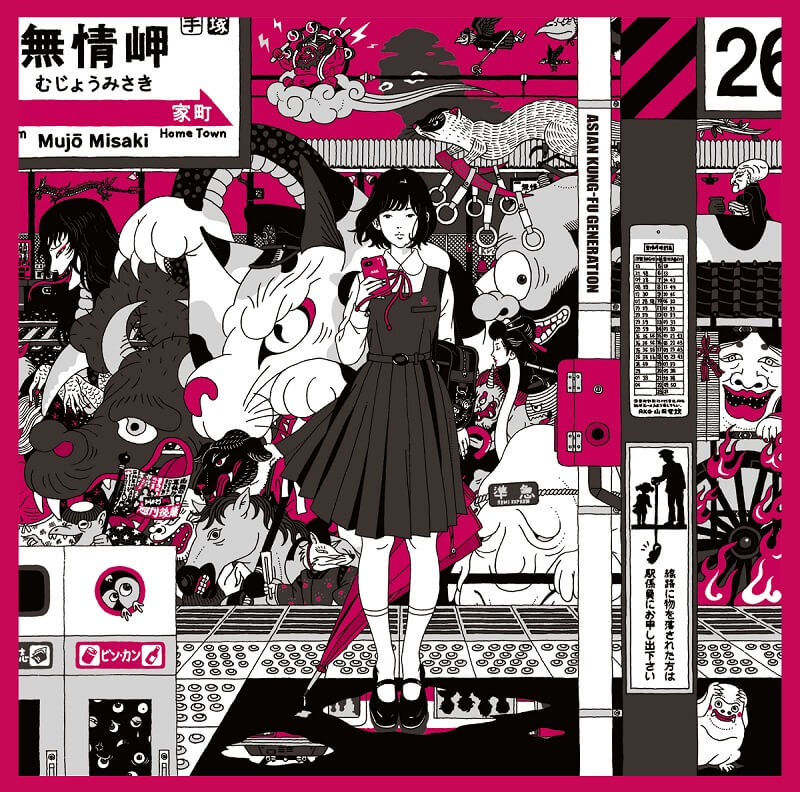
Kaihouku is one of the encore songs being played at the band’s ongoing nationwide tour. It has already become one of the band’s most important tracks.Applications close on April 19 at 9:00am (JST), so if you’re in Japan this month then don’t miss this rare occasion!
Information
ASIAN KUNG-FU GENERATION Music Video Extra Sign-Up Page
http://www.sonymusic.co.jp/event/101474Dororo / Kaihouku
Release Date: May 15, 2019
First Press Limited Edition (CD+Blu-ray): ¥3,241 (Before Tax) [KSCL-3146~3147]
Regular Edition (CD-Only): ¥1,000 (Before Tax) [KSCL-3148]
ASIAN KUNG-FU GENERATION Official Website: www.asiankung-fu.com–
-
Dororo Creditless Opening Video Featuring Theme Song by ASIAN KUNG-FU GENERATION’s Released on YouTube
03.April.2019 | ANIME&GAME / MUSIC
The creditless opening video of the TV anime series Dororo has been officially released on YouTube. The song which shares the same name as the series is performed by ASIAN KUNG-FU GENERATION.
Dororo is a manga series by Osamu Tezuka about a rōnin named Hyakkimaru whose father bartered away 48 of his body parts to 48 demons so he could obtain the power to rule the country. The story follows Hyakkimaru who now has fake body parts as he tries to defeat the 48 demons to retrieve his real parts. On the way he meets a young thief called Dororo.
The song will be released as a double A-side single entitled Dororo/Kaihouku on May 15, 2019. It will also receive an early digital release on April 22.
Talking about the song and series, the band made the following statement: “It is a profound and multilayered series that shows satire towards modern society and people behind its setting and old, mysterious story. We put love into making the song so as not to not let down the manga’s author Tezuka.”
Information
Dororo / Kaihouku
Release Date: May 15, 2019
First Press Limited Edition (CD+Blu-ray): ¥3,241 (Before Tax) [KSCL-3146~3147]
Regular Edition (CD-Only): ¥1,000 (Before Tax) [KSCL-3148]
ASIAN KUNG-FU GENERATION Official Website: www.asiankung-fu.com
Dororo Official Website: https://dororo-anime.com/
-
ASIAN KUNG-FU GENERATION Releases ‘Sleep’ Music Video
26.March.2019 | MUSIC
ASIAN KUNG-FU GENERATION released the music video for their song Sleep over on their official YouTube channel.
Sleep was featured on Can’t Sleep EP, a bonus CD that was sold with First Press Limited Edition copies of their album Home Town released last year. The song will be used as the main theme for the upcoming Japanese film Startup Girls starring Mone Kamishiraishi and Hirona Yamazaki.
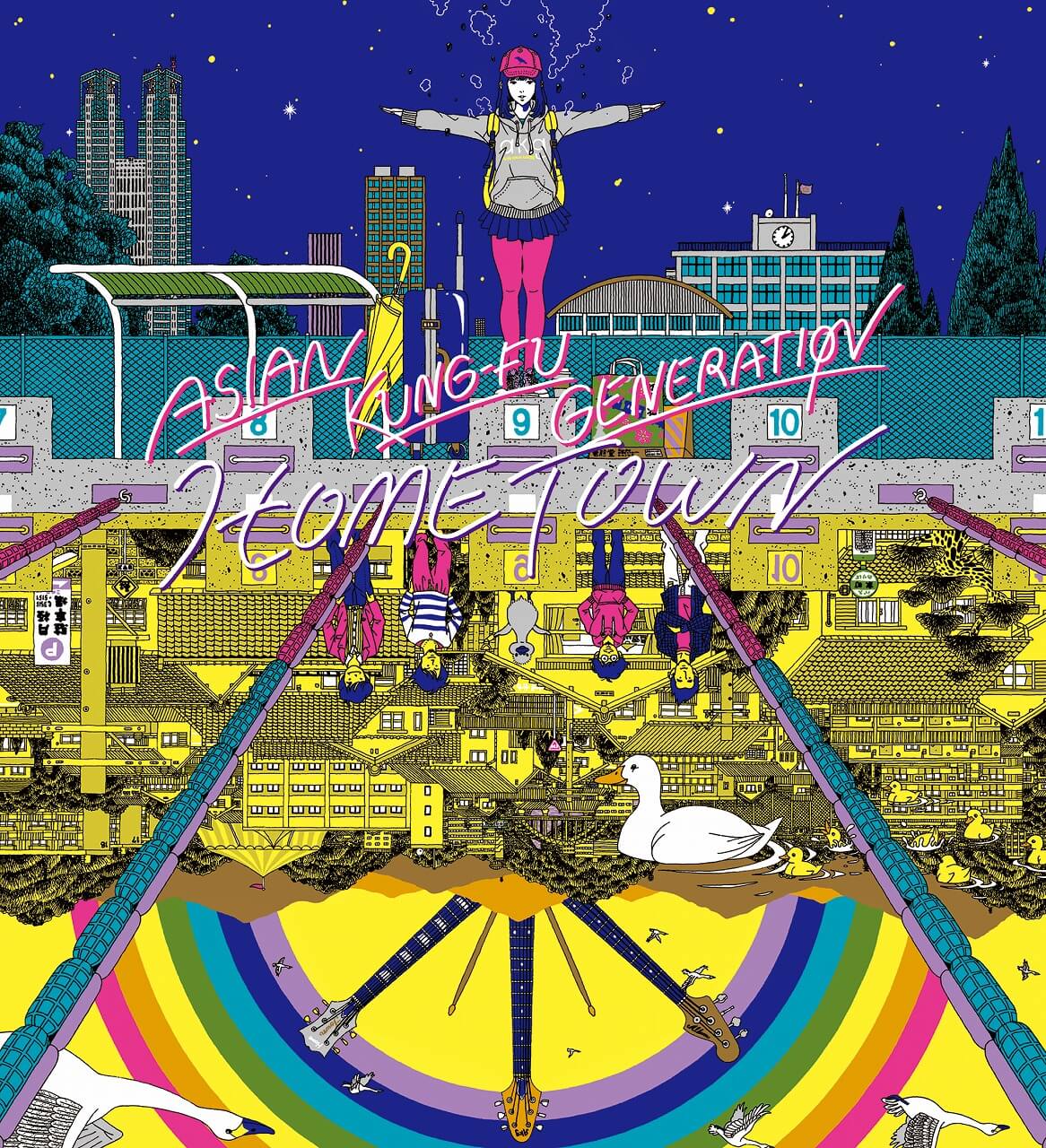
The music video features footage of the start of the band’s ongoing 2019 “Home Town” tour. It was directed by up-and-coming video director Jun Ooshima and features contemporary dancing created by Japanese choreographer Ruri Mito who took inspiration from the song’s lyrics. Mito was invited on board after ASIAN KUNG-FU GENERATION’s guitarist and vocalist Masafumi Gotoh produced the music for “MeMe,” a live event by Mito’s group Co. Ruri Mito.
ASIAN KUNG-FU GENERATION are in the midst of their ongoing tour. Tickets are still available for select dates.
Information
Home Town
Release Date: December 5, 2018
First Press Limited Edition (2 CDs+DVD): ¥4,600 (+Tax) *PlayPASS compatible
Regular Edition (CD-Only): ¥2,913 (+Tax) *First press edition is PlayPASS compatible
*Limited Edition DVD features “ASIAN KUNG-FU GENERATION America Tour Documentary Pt.2 (Latin America)”ASIAN KUNG-FU GENERATION Official Website: www.asiankung-fu.com
2019 Tour: http://www.akglive.com/tour2019/
-
ASIAN KUNG-FU GENERATION Releases 2 New Music Videos Simultaneously
28.December.2018 | MUSIC
ASIAN KUNG-FU GENERATION has released two music videos on YouTube for their new songs Motar Pool and Rainbow Flag.
The songs are taken from their latest album Home Town which was released on December 5. The videos were directed by new video creators who were left in the Creator Auditions hosted by koe Inc. The music video for UCLA, which was the first video to be directed by creators in the audition, has also been posted on the official website.
Motar Pool
Norie Enokizono, the director of Motar Pool, commented: “Everything collapses in those times where the more you treasure memories and people it doesn’t go well. When you’re set on wondering deeply to yourself over and over the darkness changes to light and you come to see what’s really important. Both courageous war cries and the howls of a losing dog are the same bark―the same action―but the reason behind them is different. You can feel both of those things when you listen to this song, so I tried to capture that moment between them both when everything stops for a moment.”
Rainbow Flag
Tatsurou Kumaki, the director of Rainbow Flag, commented: “This video has people from various backgrounds all set on rope-jumping over a big rope. Although they jump, skip and get caught the video expresses the song’s message in supporting people who live life to the fullest in their way. Be sure to check it out.”
Information
Home Town
Release Date: December 5, 2018
First Press Limited Edition (2 CDs+DVD): ¥4,600 (+Tax) *PlayPASS compatible
Regular Edition (CD-Only): ¥2,913 (+Tax) *First press edition is PlayPASS compatible
*Limited Edition DVD features “ASIAN KUNG-FU GENERATION America Tour Documentary Pt.2 (Latin America)”ASIAN KUNG-FU GENERATION Official Website: www.asiankung-fu.com
2019 Tour: http://www.akglive.com/tour2019/
ASIAN KUNG-FU GENERATION公式サイト:www.asiankung-fu.com
-
ASIAN KUNG-FU GENERATION Announces ‘Home Town’ Tour in Japan for 2019
04.December.2018 | MUSIC
Four-piece alternative rock band ASIAN KUNG-FU GENERATION will release their highly anticipated album Home Town tomorrow on December 5. To promote the new record, the band have announced a nationwide tour in Japan set for next year.
Related Article: MMN Interview (Part 1): ASIAN KUNG-FU GENERATION discuss how writing ‘Home Town’ was different from their previous records

The band will kick off the tour in March and run through up to July. They will make a double trip around Japan – the first half will take them to live music clubs while the latter half they will see them hit up hall venues. A support act is planned for the live music club shows.
The first round of early bird tickets went on sale today at 12:00 (JST) via the band’s official homepage. There will also be application cards coupled with the album when it’s released tomorrow to win special tickets to the tour. Information regarding future tickets will be made available on their website in the neat future.
Information
ASIAN KUNG-FU GENERATION Tour 2019 “Home Town”
2019/3/16 @ SENDAI GIGS, Miyagi (*Support act planned)
2019/3/18 @ Ebisu LIQUIDROOM, Tokyo (*Support act planned)
2019/3/21 @ Zepp Nagoya, Aichi (*Support act planned)
2019/3/28 @ Namba Hatch, Osaka (*Support act planned)
2019/3/29 @ Namba Hatch, Osaka (*Support act planned)
2019/4/8 @ Zepp Tokyo, Tokyo (*Support act planned)
2019/4/9 @ Zepp Tokyo, Tokyo (*Support act planned)
2019/4/12 @ Zepp Sapporo, Hokkaido (*Support act planned)
2019/4/15 @ Zepp Fukuoka, Fukuoka (*Support act planned)
2019/4/17 @ Kumamoto B.9 V1, Kumamoto (*Support act planned)
2019/4/18 @ Kagoshima CAPRAVO HALL, Kagoshima (*Support act planned)
2019/4/21 @ Koza Music Town, Okinawa (*Support act planned)
2019/5/18 @ Sun City Koshigaya City Hall, Tokyo
2019/5/19 @ Sun City Koshigaya City Hall, Tokyo
2019/5/22 @ Yokosuka Arts Theatre, Kanagawa
2019/5/25 @ Sendai Sun Plaza Hall, Miyagi
2019/5/29 @ Nakano Sunplaza, Tokyo
2019/5/30 @ Nakano Sunplaza, Tokyo
2019/6/1 @ Ibaraki Prefectural Culture Center, Ibaraki
2019/6/4 @ Omiya SONIC CITY (Big Hall), Saitama
2019/6/7 @ Wakwak Holiday Hall, Hokkaido
2019/6/12 @ Festival Hall, Osaka
2019/6/13 @ Festival Hall, Osaka
2019/6/16 @Nagoya Congress Center Century Hall, Aichi
2019/6/21 @ Uenogakuen Hall, Hiroshima
2019/6/23 @ Gunma Music Center, Gunma
2019/6/29 @ Hondanomori Hall, Ishikawa
2019/6/30 @ Niigata Prefectural Civic Center, Niigata
2019/7/4 @ Ichikawa City Cultural Hall, Chiba
2019/7/10 @ Kobe International House Kokusai Hall, Hyogo
2019/7/12 @ Fukuoka Sunpalace Hotel & Hall
2019/7/14 @ Sunport Hall Takamatsu (Big Hall), Kagawa
2019/7/21 @ Shizuoka City Community Hall (Big Hall), Shizuoka
2019/7/24 @ PACIFICO YOKOHAMA, Kanagawa
2019/7/25 @ PACIFICO YOKOHAMA, Kanagawa
Ticket Prices
Standing: ¥5,500 (Tax Included)
2nd Floor Reserved Seating: ¥6,000 (Select Venues Only) (Tax Included)
Reserved Seating: ¥6,000 (Tax Included)
On Sale
February 9, 2019 [March 16 – April 21 Concerts]
April 31, 2019 [May 18 – June 21 Concerts]
May 18 [June 23 – July 25 Concerts]
*Tickets required for everyone aged 3+
*It is requested that those with children take ear plugs to protect their children’s ears from the loud music
*Separate mandatory drink fee charged for concerts in March and April
Student Discount (High School & Below)
High school students and younger will receive ¥1,500 cashback on the day at the venue. High school and junior high school students must present their student IDs and elementary school students and under must present proof of age.
*Cashback is only available to those who are present at the venue.
*Those unable to present student ID will not receive cashback.
Early Bird Tickets – Round 1
Running: December 4, 2018 at 12:00 (JST) – December 16, 2018 at 23:00 (JST)
Available via Lawson Tickets
‘Home Town’ Album Special Ticket Lottery
Running: December 17, 2018 at 12:00 (JST) – December 26, 2018 at 23:00 (JST)
*Details available inside purchased CDs.
Album Website: http://www.akglive.com/tour2019/
Home Town
Release Date: December 5, 2018
First Press Limited Edition (2 CDs+DVD): ¥4,600 (+Tax) *PlayPASS compatible
Regular Edition (CD-Only): ¥2,913 (+Tax) *First press edition is PlayPASS compatible
*Limited Edition DVD features “ASIAN KUNG-FU GENERATION America Tour Documentary Pt.2 (Latin America)”
ASIAN KUNG-FU GENERATION Official Website: www.asiankung-fu.com -
MMN Interview (Part 2): ASIAN KUNG-FU GENERATION―‘We never imagined our music would reach the other side of the globe’
ASIAN KUNG-FU GENERATION’s (AKFG/Ajikan) upcoming ninth studio album Home Town is their first in three-and-a-half years, and it’s truly a fantastic record. It’s interweaves elements of 90’s power pop and alternative rock―genres which the members have come to be influenced by―while still being firmly in tune with today’s trends. The masterpiece mobilises a musical battalion of distinguished names such as Rivers Cuomo of American rock band Weezer and yet still is in every way a quintessentially AKFG record. The key to understanding this can be found in the changes to their music production environment. We spoke to the four members about the backstory of creating Home Town which they described as having been “so much fun” and about their connection to the rest of the world as having travelled around the world.
Interview & Text: Ato “DA” Daishi
Translation: Joshua Kitosi-Isanga
<This is part two of the interview. Click here for part one.>
――The First Press edition of your new album comes with a DVD of your tour in South America. You’re perceived as going to South America a lot.
Kita: And yet we’ve been twice, in 2015 and last year.
――What made you want to tour in South America?
Goto: At the beginning we were invited to events like Japan Expo in Chile, so we decided to continue with that line of things and go on tour. We went to Argentina, Brazil and Mexico. We were surprised at how many fans we have in South America. It was fun, and a really wonderful experience. We want to try going to many more countries.
――How about an Asia tour?
Goto: Certainly, we want to go. Asian pop music seems rife these days. The younger generation [of musicians] especially, they work and interact without borders. A recent example is in one of Hikaru Utada’s songs where she was joined by an Asian rapper. I’m performing together with a songwriter called Phum Viphurit from Thailand in December too. But Asia is a region where bands can come and go easily and I think it will become more interesting in the future, so it’d be nice if us old guys can join in too.
――What are South American fans like? I’ve seen concerts from other [Japanese] artists in Mexico City before, and the fans leave a strong and enthusiastic impression.
Goto: They’re really amazing, just wonderful. They chant like soccer fans and sing all the verses.
Kita: They’re at it even before the concert starts.
――So much so that you’re surprised at how excited they are right from the get-go?
Goto: Exactly. Like, they’ll be singing our songs two hours before the show starts, and again for another whole two hours when we come on (laughs). Japanese people don’t express their emotions in that way very easily so I’d like them to join in too. This is something I thought when we travelled around the world, but I was shocked to find out Japanese people are the quietest. Any country we go to everyone is so energetic, but when we perform at a festival in Japan afterwards, I think, “We’re headlining, and yet are we not popular?” That’s how quiet they are. Japanese people are too shy, so we’ve got to change that.
――Do the songs that people enjoy differ from country to country?
Goto: They do. When we go to Europe it’s songs like Siren which is multilayered and played in minor key. The songs that sounds like British rock are received well, but our less-known songs not so much. Though they’re well-received in South America.
――Is there anything that’s stuck with you from your overseas tours?
Goto: We were really nervous and moved when we first went to South Korea. Asian history is complicated, so we were a little tense at first. I had the silly thought in my head that there were lots of Korean people who hated Japanese people. But it wasn’t like that at all when we stepped on stage. They gave us a huge welcome. Even backstage after the show, Korean bands came up to us excitedly, and we got to exchange CDs with them. We were deeply moved by those exchanges and said to ourselves, “Ah, there’s plenty of things we’re able to do. It will be nice if we can continue connecting and getting along with everyone like this.” The bands we were acquainted with during that time are still our friends today. No matter how busy they are with work they will come to play when we go over there. It’s still a really vivid memory that’s stayed with me.
―Did you ever envision yourselves touring the world when you formed the band?
Goto: We had that mindset surprisingly early on. Our band name ASIAN KUNG-FU GENERATION, for example. We felt we would stand out better when performing around the world if they thought of us as an Asian band. Also, when we debuted, our song Haruta Kanata was used as the opening theme for the anime Naruto. It was a time when there was still a strong air that questioned a rock band performing an anime song. But we all said to each other that by doing it together with a show like Naruto, our song would travel across the ocean and be shared throughout the world. That’s why from then on we purposely incorporated Asian melodies and it’s something we’re still conscious of. And it’s proven true that the people of the world enjoy those kind of melodies.
――You spoke about there being a time when there was a strong air of criticism towards rock bands doing anime songs. The fact that you were genuinely able to have that mindset back then is amazing.
Goto: Since forming the band we’ve wanted to go overseas, so we’re overjoyed by the fact it’s becoming a reality. Saying that though, I’m really shocked because I never thought we would reach the other side of the globe (laughs). Even now I still can’t believe we’ve performed in Peru. Chile too, I was so moved. I was like, “It’s that Chile, the long and narrow country!”
――All things considered, at the end of more than 20 years, it’s a dream to be able to make music with musicians you have looked up to since your early days.
Goto: It really is strange. I’m getting used to this situation and it scares me. But the musicians in the West are all humans just like us. So we won’t stiffen up, we’ll keep calm, and in doing so we’ll be happy if we can continue connecting with bands around the world.
ASIAN KUNG-FU GENERATION 「Memories of the Ruins」 MV
Information
Home Town
Release Date: December 5, 2018
First Press Limited Edition (2 CDs+DVD): ¥4,600 (+Tax) *PlayPASS compatible
Regular Edition (CD-Only): ¥2,913 (+Tax) *First press edition is PlayPASS compatible
*Limited Edition DVD features “ASIAN KUNG-FU GENERATION America Tour Documentary Pt.2 (Latin America)”
ASIAN KUNG-FU GENERATION Official Website: www.asiankung-fu.com -
MMN Interview (Part 1): ASIAN KUNG-FU GENERATION discuss how writing ‘Home Town’ was different from their previous records
ASIAN KUNG-FU GENERATION’s (AKFG/Ajikan) upcoming ninth studio album Home Town is their first in three-and-a-half years, and it’s truly a fantastic record. It’s interweaves elements of 90’s power pop and alternative rock―genres which the members have come to be influenced by―while still being firmly in tune with today’s trends. The masterpiece mobilises a musical battalion of distinguished names such as Rivers Cuomo of American rock band Weezer and yet still is in every way a quintessentially AKFG record. The key to understanding this can be found in the changes to their music production environment. We spoke to the four members about the backstory of creating Home Town which they described as having been “so much fun” and about their connection to the rest of the world as having travelled around the world.
Interview & Text: Ato “DA” Daishi
Translation: Joshua Kitosi-Isanga
<This is part one of the interview. Click here for part two.>
――You are soon to release ‘Home Town,’ your first studio album in three-and-a-half years. How has it been since then in producing this record?
Goto: Though it’s been three-and-a-half years, we’ve been up to all sorts of of things.
Kita: We had our 20th anniversary concert.
Goto: But if I were to describe the nature of the band in a word right now… Say, when we do a tribute [performance], people really notice, “Hey, so this is the kind of sound Ajikan has.” I feel it’s been a time for us to reflect once again on what we’re good at.
――I see. This album is different from your other records up to now. Was there something that had an influence on the production this time around?
Goto: The biggest influence came from the renovation of our studio. We began renting a basement three years prior and gradually began to update it by taking our equipment in. That’s let us manage our environment for recording and mixing over the past year and experiment with different things without any hesitations. I think being able to build a base where we can focus on our sound has been huge for us.
――Having no time or budget restrictions means you have more time to do as you please.
Goto: That’s right. Especially when recording guitar, it feels pretty good doing it now. We all get excited together testing out different effects, we can hook up to the amps right away, I can set up the mics myself. It’s had a big influence on vocals and guitar in particular.
――Even having been 20 years since you got together, changing your work environment has shown there’s still plenty of new things to be discovered.
Goto: The atmosphere can change depending on which studio we use. If it’s a good studio we’re in high spirits. A change of environment is the biggest influence no matter what you’re doing.
――How do you feel about the changes with this album, Kita?
Kita: Gocchi [Goto] had been doing his solo work and Kiyoshi [Ijichi] was part of his other band PHONO TONES. For the past four years I’ve wondered what we as a band can do. In the end I felt that what we’d been doing was the limit. We carried on feeling half-defiant about it, but making this album was fun because we felt relaxed. I believe we’ve been able to make pop, a genre we’ve always liked.
――The whole album calls to mind 90’s alternative rock. Is that a correct assumption?
Kita: Gocchi brought up those keywords during the songwriting and arrangement process, so half of the time we went back and listened back to that kind of music as reference. It was fun. Truly.
――Why do you think those keywords came out?
Goto: I’ve always really liked that 90’s sound, especially guitars from that time. They were experimental back then, it was an interesting period. We had that kind of spirit in our early days too. So we thought if we took that guitar sound and added a contemporary beat to it we could make a new kind of alternative rock. Rap music is popular worldwide right now. The bass in it is really heavy. It’s hard to produce that kind of sound in rock because we use raw instruments, but our first thought was that it could be interesting to challenge ourselves to do it and create some interesting guitar sounds. We also listened to Pavement, Dinosaur Jr., Beck, and of course Weezer. We thought it would be good if we could harness the interesting parts of music from 90’s America.
――While it feels like new AKFG, that explains the reason why there are parts that feel nostalgic and tug on your heartstrings. Another highlight of the album is just how many guest musicians are on it.
Goto: We’ve done this for 20 years now and have established ourselves to a degree in some form, so we had talked about getting involved with producers from overseas, or doing it with someone new. That’s when we thought, “It’s free to ask, so let’s try.” We spoke with a bunch of people and to our surprise they got on board.
――I see.
Goto: We live in a time of playlists so we initially thought it would be fine to write an album with variety and spread our wings in every direction, but when we worked on the song with Rivers Cuomo (Weezer), we felt that that was the kind of music we wanted to make. That lit our inner fire for the power pop and alternative rock we loved. So there are parts where what we originally wanted to do changed as we pushed forward with writing.
――So that’s how things turned out.
Goto: We had decided relatively early on that we would collaborate with Rivers Cuomo, but there was a time I did think, “I asked him lightheartedly, but we might have just gone and started something huge” (laughs). We thought to ourselves, this is bad―compared to Rivers we have a considerably low number of gloomy songs, and if I start thinking other people’s songs are better my luck in songwriting is over (laughs)―so we psyched ourselves up and starting writing.
――But it’s not just Rivers you have on board either, is it? You have Butch Walker, Grant Nicholas of Feeder and others too.
Goto: You know, Rivers actually remembered about Butch Walker after the fact. He said, “By the way, I made this song with Butch Walker so be sure to credit him,” and we were like, “That’s dangerous! What if he turns us down later? (laughs).”
――That is certainly dangerous (laughs). On the other hand, you have Horie from ‘Straightener’ with whom you are longtime friends with, Shimoryo from ‘the chef cooks me’ who are support musicians for your live shows, and lots of other young musicians. I think you have a good balance of guests.
Goto: Well, they’re all from our neck of the woods so it was fun to do it with such good musicians.
――Despite so many other musicians being involved, you’ve stuck to your principles. It’s full circle, so much so that there would be no doubts if it was said that it was just the four of you who made it.
Goto: That’s true. These past three-and-a-half years that ‘sound’ we analysed ourselves has come out. I feel that fact of us being ‘this kind of sound’ is much more visible. I think it’s an interesting discovery. It’s not that we were aiming for that, but when the four of us get together and cheerfully enjoy ourselves making music, it’s fundamentally us. There’s no running from that anymore. In a sense, it’s a sickness. A sickness called Ajikan. This is what we’ve become.
――Haha! But, your chord progressions are very simple, and each individual sound chips off. I think there’s a lot of elements that weren’t there before.
Ijichi: We’ve lowered the number of kick drums so we can up the low rhythms and better hear each sound. By seeking the quality of each individual sound the number of sounds you have in fact decreases naturally. A lot of music overseas is like that. There’s young Japanese musicians out there who like to have lots of sounds though.
Goto: They can’t control their guitar playing and just go for it.
Kita: It’s worrying.
――It ends up getting buried in the crevices of the music.
Kita: That’s what happens when you’re young.
Goto: It’s like worrying about a shift not coming in for you at your part-time job.
――Haha!
Kita: Even though they’re told, “You can have the day off.”
Goto: “No! I can work today!” And they’ll go ahead and play but the result is you’ll end up losing the other parts of the music.
――What about the bass?
Yamada: Like the other parts, when you up the phrases of the bass your opportunity to play higher notes increases too. But if you go for lower tones like we did this time there’s no need for that. By doing that, the phrases naturally become simple. That’s why in parts we put more consideration into the sound than the arrangement.
――Goto, you mentioned some musicians’ names earlier. I really felt elements of Pavement in Circus. I think it’s cool that this record is littered with fun things that will make 90’s rock listeners smile.
Goto: Circus was originally a dull and plain mix. Our audio engineer Greg Calbi said, “This song is too plain. There aren’t enough highs so I’m going to jazz it up more.”
Kita: It was the plainest song on the album, wasn’t it.
――When I was going through the album I watched the music video for [the title track] ‘Home Town’ and wondered if it was an homage to The Rentals.
Goto: That was something the director did. We’re not really sure, but he’s often in touch with the Matt [Sharp, the vocalist]. During those three-and-a-half years we had a barbecue at Matt’s house and stuff.
――Ooh?
Goto: Matt said “I’m doing a barbecue,” so we went there but there weren’t any ingredients, he just put the charcoal in the barbecue and said, “Help yourselves.” I was like, “So it was a potluck dinner?!” (laughs)
――Tell us that sooner, right? (laughs)
Goto: In the end we went home hungry. He had a mountain of beer but he didn’t have anything to eat. So we’re going to drink beer on empty stomachs? Well, he’s an amusing person in that way.
――Something I’ve felt while we’ve been talking up to now is that these three-and-a-half years have been really good for the four of you. Not just in terms of music but mentally as well.
Goto: It’s because we experienced a lot of things. We went on tour in South America, Europe and the US. We hadn’t intended to have a break at all.
――For sure, you don’t imagine going so long between albums. What’s more is that you even coupled the First Press edition of the album with the 5-track Can’t Sleep EP. What made you decide to do this?
Goto: We don’t want people to pay double the amount for separate CDs, and in this day and age I think the ones who would buy our albums are people who really like us, so we thought it would be a nice advantage for those people. There are probably people who listen to us on Spotify too so we wondered if it we’d need to release them separately. But we felt that listening to one whole album for an hour doesn’t really fit with the times. So we split it into 10 songs and 5 songs and thought they would both be easier to listen to if they each hold their own meanings.
――Yamada, you provided the main vocals for the first time on the song Yellow from the Can’t Sleep EP.
Yamada: I’m trying to process if it’s even OK to call it the main vocals (laughs). Gocchi didn’t write this one, it was just us three. Although I think it has a different taste from the rest of the album, I’m glad it was included in the end. I’d be satisfied with that alone, but I never thought I’d be singing on my own (laughs).
The interview is continued in Part 2.
Information
Home Town
Release Date: December 5, 2018
First Press Limited Edition (2 CDs+DVD): ¥4,600 (+Tax) *PlayPASS compatible
Regular Edition (CD-Only): ¥2,913 (+Tax) *First press edition is PlayPASS compatible
*Limited Edition DVD features “ASIAN KUNG-FU GENERATION America Tour Documentary Pt.2 (Latin America)”
ASIAN KUNG-FU GENERATION Official Website: www.asiankung-fu.com -
ASIAN KUNG-FU GENERATION Release Music Video for ‘Home Town’ From New Album
14.November.2018 | MUSIC
ASIAN KUNG-FU GENERATION have just released a music video for Home Town taken from their upcoming album of the same name that’s set to drop on December 5.
“Home Town” Music Video
The power pop number features a light-hearted guitar atop a pop melody with lyrics that look towards the future. The video was directed by Masaki Ookita who also directed the band’s music videos Easter, Opera Glasses and Blood Circulator. We see the band from many angles in a completely white world devoid of ups, downs, lefts or rights. In a surreal scene they ride invisible bikes, and in another pose like cactus.
Information
Home Town
Release Date: December 5, 2018
First Press Limited Edition (2 CDs+DVD): ¥4,600 (+Tax) *PlayPASS compatible
Regular Edition (CD-Only): ¥2,913 (+Tax) *First press edition is PlayPASS compatible
*Limited Edition DVD features “ASIAN KUNG-FU GENERATION America Tour Documentary Pt.2 (Latin America)”
ASIAN KUNG-FU GENERATION Official Website: www.asiankung-fu.com


